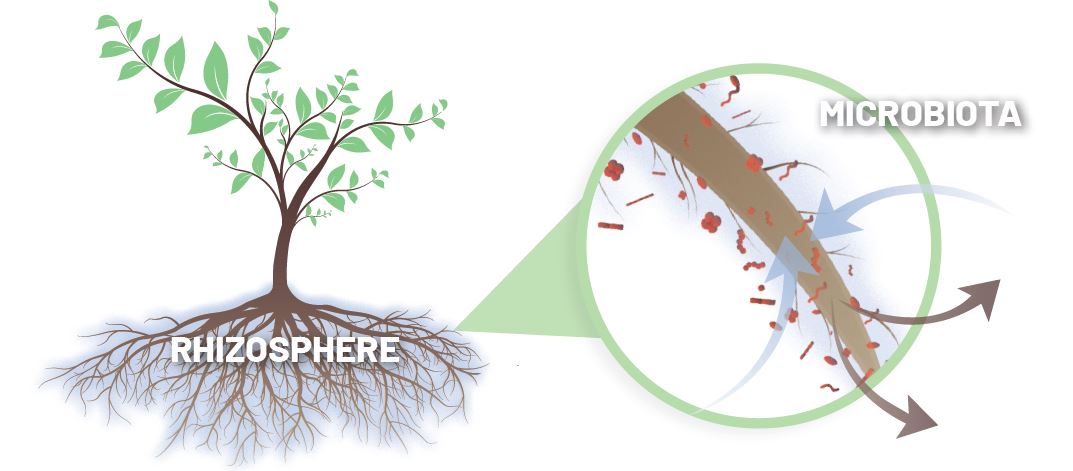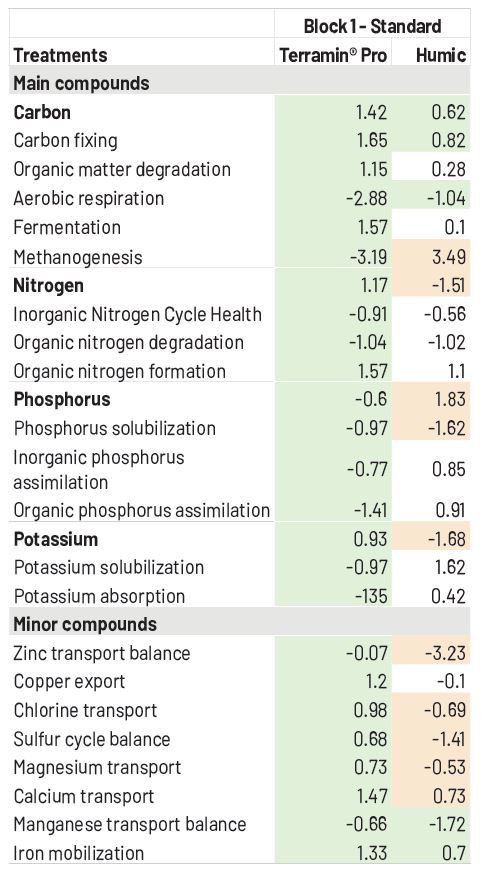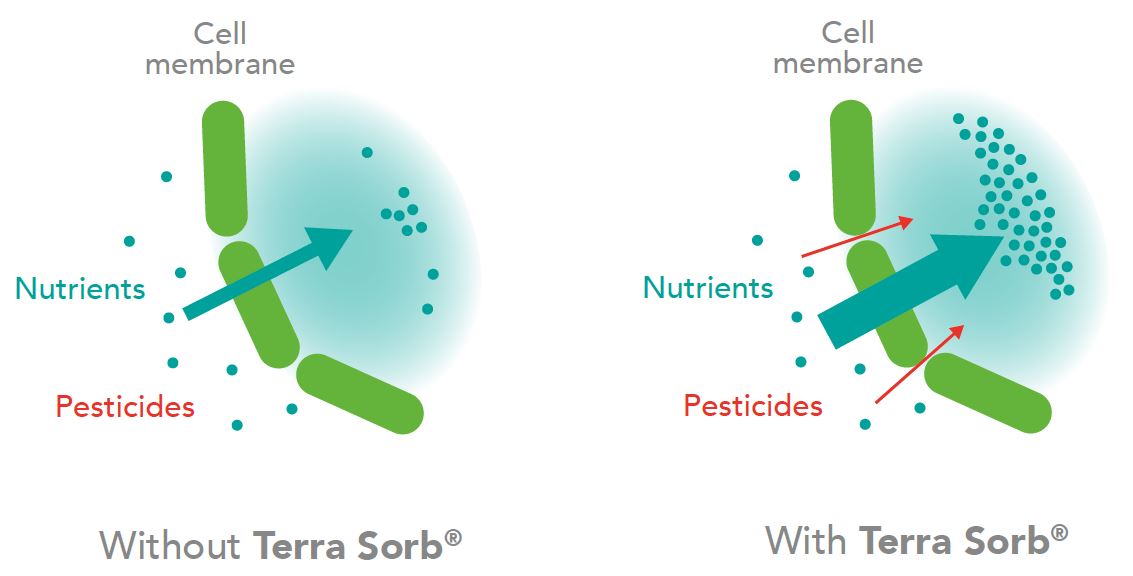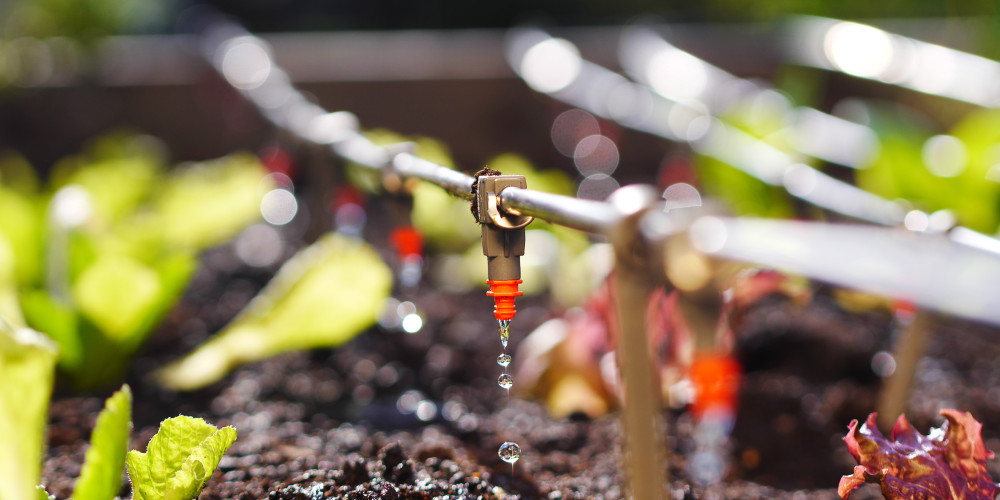Biostimulation in fertigation, aiming for maximum efficiency
Tuesday, 24 January 2023
Applied Knowledge
BY Cándido Marin, R&D Project Leader Plant Health
The drive for fertigation
Over the last 30 years, fertigation has established itself as an indispensable tool for agricultural production. Agriculture is responsible for feeding the world's growing population and increasing quantities of higher quality food are needed year after year. However, at the same time resources are limited and the quality of the soil and water is deteriorating. It is therefore necessary to optimise agricultural production and ensure the sustainability and viability of farming. Fertigation plays a key role in this.
The modernisation of irrigation came with the introduction of sprinkler irrigation for extensive crops and drip irrigation for horticultural and woody crops. This was the first step taken to optimise resources with a focus on water. The amount of water used could be reduced within more or less limited possibilities, minimising the filtration and leaching of the more soluble nutrients. Water usage by crops was also improved, avoiding the periods of both waterlogging and insufficient water in the soil caused by traditional irrigation methods, which affect the plants’ root systems.
The next big advance was provided by the use of new technologies: probes, computers and software that enable irrigation to be programmed according to the environmental conditions, the phenological stages of the crops and the specific conditions of the soil, water and fertilisers used. We have now reached the stage where, in addition to optimising the use of water, we can also greatly improve the use of fertilisers, programming their application to avoid incompatibilities between cations as much as possible, minimising the impact on EC/salinity, improving the pH of the irrigation water and also the rhizosphere.
In the past 10 years a lot of practical progress has also been made in other tools to improve fertigation, namely technologies to monitor soil humidity. Using capacitive sensors, dendrometry, remote monitoring, etc., we can obtain a highly accurate picture of the soil and plants’ hydric state. Although these technologies still have to resolve certain problems of cost and reliability, issues which are further complicated by the variability of the agricultural soils in our context, current trends in the development of technology lead us to believe that, in a few years’ time, they will be regularly used by a large number of farms.
Within our customary search for excellence, we need to combine the achievement of maximum yields with a viable and more sustainable agriculture and that’s why, in recent years, we have focused on the soil. Not only as a medium for crops but also as a living entity that can be of vital importance for the health, growth and production of plants.
The rhizosphere and soil microbiome
Today we are well aware of the importance of the rhizosphere, as well as the importance of the soil microbiome, the microorganisms that interact with roots. These fungi and bacteria have been studied extensively in recent years and have already been incorporated into some production processes, such as seed inoculation in extensive crops, the mycorrhization of plants before transplanting and the application of various formulations through irrigation (mycorrhizae, Trichoderma, Bacillus and other fungi and bacteria).

The rhizosphere is the region of soil explored by the roots and can be considered as the few centimetres (1-3 cm) that surround each of the roots of a plant. There’s a lot of microbial life in this region and the soil is affected by root secretions. There’s a huge amount of interaction between the plant, soil and microorganisms and this is very important for crop production. In the majority of these interactions, the microorganism-plant association can be beneficial (mycorrhizae, nitrogen-fixing bacteria, etc.).
As a summary of the best known soil and rhizosphere microorganisms, we can focus on nitrogen-fixing bacteria. Working symbiotically with plants are Rhizobium, specific to legumes; working freely without the need for any combined activity with plants are Azotobacter and Azospirillum, among others.
Phosphate solubilising bacteria are also well known. It is important to convert phosphate into forms that can be assimilated by plants; some of the species identified are Pseudomonas putida, Bacillus subtilis, Penicillium bilaji and Aspergillus niger.
Regarding microorganisms that can boost plant growth, we can mention Trichoderma, Diplodia, Gibberella, etc., capable of producing and mobilising substances that affect plant growth.
How can biostimulants improve life in the rhizosphere and agricultural production?
The main biostimulants are formulated on the basis of free amino acids and algae extracts. They have been used for about 50 years and their role in the different metabolic processes of plants is well known. They stimulate root formation, improve water and nutrient uptake, increase endogenous production of phytohormones and enhance plant resistance to environmental stress. They can be applied through foliar sprays or directly to the roots through irrigation.
What are the advantages of applying biostimulants through irrigation?
- Energy savings in the nitrogen metabolism pathway: energy is saved in the assimilation of nitrogenous forms, maximising agricultural production whilst reducing the need for synthetic nitrogen fertilisers.
- Modification of rhizosphere conditions: L-α-amino acids act as bio-activators, increasing ion exchange capacity, regulating soil pH, mobilising nutrients locked in the rhizosphere and stimulating soil microbiota.
FUNCTIONAL INDICES: MOBILIZATION OF NUTRIENTS

The application of Terramin® Pro improves the rates of carbon, nitrogen, potassium and various micronutrients compared with the control, and differs from humic acid treatments for standard agricultural soil.
- Better nutrient absorption: L-α-amino acids boost the growth of the plant’s root hairs, increasing their absorption surface area. They also act as complexing agents for a large number of oligo- and micronutrients (Ca, Mg, Fe, Zn, Mn and Cu) and are recognised by cell membrane receptors as natural transporters of these nutrients, boosting root efficiency.
- Enhanced resistance to stress: L-α-amino acids act as osmotic regulators, decreasing the osmotic potential and thereby increasing root and plant tolerance to hydric or salt stress when conditions are not optimal.
The application of Terra-Sorb® together with the phytosanitary treatments increases the permeability of the membranes since it improves the speed of absorption of the active materials (nutrients and phytosanitary products) into the cell cytoplasm.

Today's fertigation cannot be fully understood without the use of biostimulants due to the need to increase agricultural production in terms of quantity and quality, as well as the need to optimise our use of water and nutrient resources. Nowadays the application of these products is almost obligatory in order to achieve profitable, environmentally friendly and sustainable agriculture.
At Bioiberica we were pioneers, providing growers with this tool more than 35 years ago with Terra-Sorb® radicular. We then developed a specific biostimulant for nurseries and new plantations, Inicium®, for those cases when it’s necessary to stimulate root activity, as well as a new prebiotic biostimulant that stimulates soil microbiota and can also be used in organic farming, Terramin® Pro. Soon we’ll be launching our new Terra-Sorb radicular SymBiotic™, Bioiberica's first biofertiliser, which combines the capabilities of the best free L-α-amino acids and an exclusive strain of Bacillus velezensis (strain PH-023) in order to optimise fertigation.

